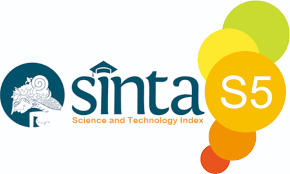ANALOGY DEGRADATION IN THE INFORMATION OF THE TEMPE IS AS THIN AS ATM CARD IN DETIK.COM USING CRITICAL DISCUSSION ANALYSIS IN FOUCAULT PERSPECTIVE
DOI:
https://doi.org/10.22460/jler.v2i2.p22-27Keywords:
Critical Discourse Analysis, Tempe as thin as ATM, degradationAbstract
This article was made to describe the results of research on the use of language, about the way the media constructs a discourse, the constellation of power that occurs in the process of production and reproduction of meaning in the news about Tempe as thin as ATM card that reported by Detik.com. The method used in this research is descriptive, namely, the method that describes the status of the phenomenon to an object to be researched. This type of research is qualitative research because the data of this research is news that has been transcribed. Observation and documentation techniques are used to collect data in this research. While the data analysis technique used in this research is based on AWK Faucault’s theory which has two main focuses namely power genealogy analysis and knowledge archeology analysis. From the data analysis that has been done, some conclusions can be described. First, the news made by Detik.com has an argument and descriptive nuance that explains Sandiaga Uno's statement regarding the size of Tempe which is almost the same as ATM card. Second, Detik.com tends to report on the size of Tempe rather than the point of the statement that spoken by Sandiaga Uno. Detik.com, in its news, did not explain that the Tempe is as thin as ATM statement was an analogy, seemed to lead public opinion that Sandiaga Uno had made a lie on the discovery that there was thin Tempe as thin as ATM, so the public judged negatively on Sandiaga Uno's statement.
References
Ananta, UY. (2018). Merajut Mimpi Pemuda Hari Esok. Yogyakarta: Diandara Kreatif.
Anggito, A. (2018) . Metodologi Penelitian Kualitatif. Sukabumi: Penerbit Jejak.
Darma, YA. (2009). Analisis Wacana Kritis. Bandung: YRama Widya.
Eriyanto. (2005). Analisis Wacana Pengantar Analisis Teks Media. Yogyakarta:
LKis.
Foucault, M. (2002). Pengetahuan dan Metode (Karya-Karya Penting Foucault).
Yogyakarta dan Bandung: Jalasutra.
Halwati, Umi. (2013). “Analisis Foucault Dalam Membedah Wacana Teks Dakwah Di Media Massa.†AT-TABSYIR: Jurnal Komunikasi Penyiaran Islam 1 (1).
Herdiansyah, H. (2010). Metodologi Penelitian Kualitatif. Jakarta: Salemba Humanika.
KBBI. (2019). Kamus Besar Bahasa Indonesia (KBBI). [Online] https://kbbi.web.id/se-, [Diakses 12 Januari 2019]
Ritzer, G. (2003). Teori Sosial Post Modern. Yogyakarta: Kreasi Wacana.
Santoso, WM. (2010). Ilmu Sosial di Indonesia: Perkembangan dan Tantangan.
Jakarta: Yayasan Obor Indonesia.
Sobari, Teti, and Ida Hamidah. (2017). “ Analisis Wacana Paradigma Kritis Teks Berita Penghinaan Pancasila oleh Habib Rizieq Sihab Pada Seaword.com Dan Liputan6.com.†Lingua (13) 2: 166-181.






